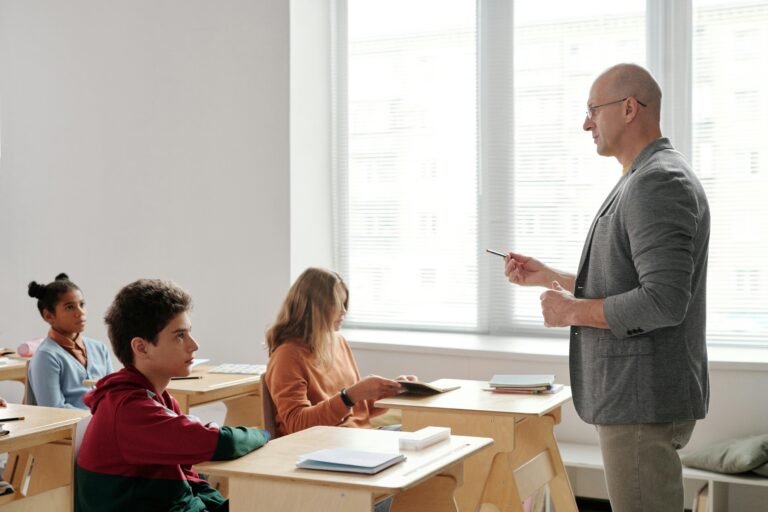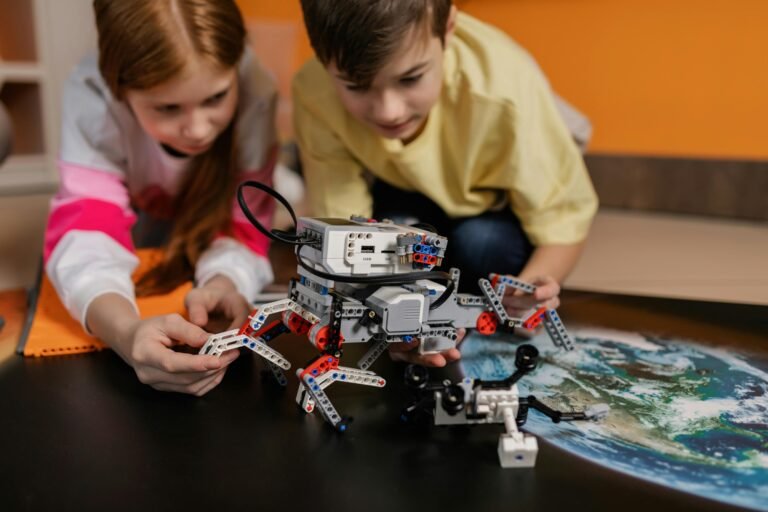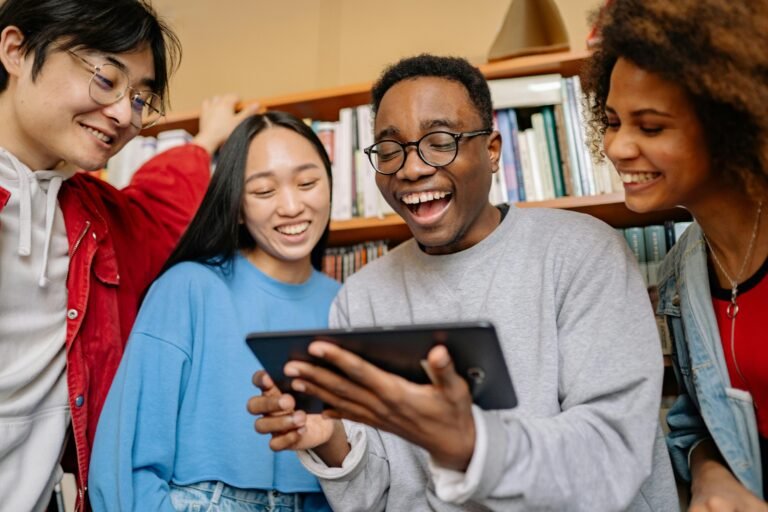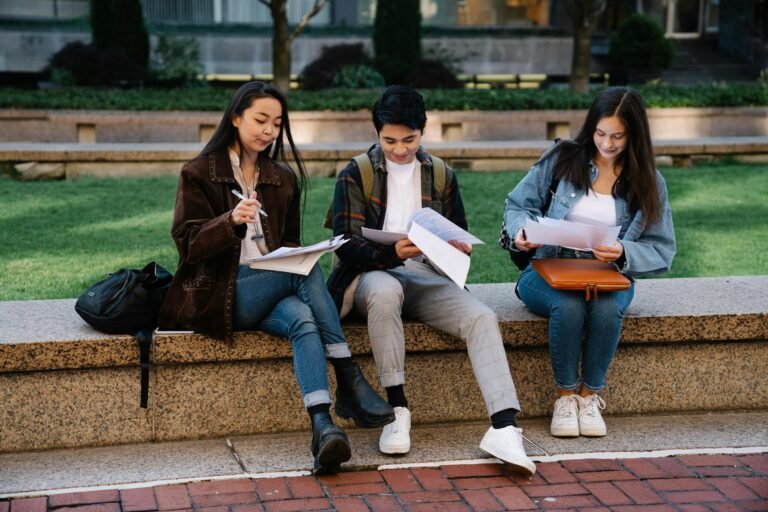If you’ve ever wished you had more time to collaborate with colleagues, learn from one another, and build a stronger support system in your school, then you’ve already felt the need for a Professional Learning Community (PLC).
At its core, a Professional Learning Community (PLC) is more than just a meeting. It’s a mindset. It’s a culture. And for many educators, it’s one of the most impactful ways to improve teaching practices and, most importantly, student outcomes.
In today’s schools, where demands are high and time is limited, a well-functioning Professional Learning Community (PLC) can be the difference between simply getting through the year and truly growing. both professionally and as a school community.
What Is a PLC?
A Professional Learning Community is a group of educators who come together regularly with one purpose in mind: to improve teaching and learning. These communities are built around shared goals, mutual accountability, and a belief that collaboration leads to better outcomes for both students and staff.
But let’s be clear: a PLC is not just another meeting on your calendar. It’s an ongoing process — grounded in inquiry, driven by data, and powered by relationships. It’s a space where educators roll up their sleeves, reflect on their practices, challenge assumptions, and support each other in the pursuit of better results.
Why PLCs Work: Real Benefits for Real Educators and Students
Creating a PLC may sound like another “initiative,” but the truth is, when done right, it doesn’t feel like a top-down mandate. It feels like the kind of work teachers want to do — and the kind of support every school needs.
Here’s what educators often gain from effective PLCs:
1. Ongoing Professional Growth That Feels Relevant
PLCs give teachers the time and structure to learn from each other, share classroom successes and struggles, and dive into new strategies that actually make sense in their context. It’s not about “sit-and-get” PD — it’s about learning that sticks because it’s directly tied to what teachers are already doing (or want to do better).
Over time, this leads to:
- A more collaborative, curious culture
- More confidence trying new instructional strategies
- Increased access to current research, tools, and resources
- A greater sense of professional fulfillment and purpose
2. Stronger Student Outcomes
When educators are aligned and purposeful in their teaching, students feel the difference. PLCs help teachers:
- Align instruction with standards and goals
- Identify and address learning gaps in real time
- Use data to inform decisions — not just collect it
- Offer more targeted, meaningful feedback to students
The ripple effect is real: as teacher learning improves, so does student learning. And when students feel that their teachers are connected and invested, they often become more engaged and motivated themselves.
3. A More Positive, Collaborative School Culture
In schools where effective PLCs are the norm, something powerful happens: people talk more. They listen more. They trust each other more. And the culture shifts from isolation to collaboration.
PLCs can:
- Strengthen relationships among staff across grade levels and departments
- Break down silos and increase shared responsibility
- Foster mutual respect and open communication
- Create a shared vision of success — for students and staff alike
Building a PLC That Works: Steps to Get Started (or Take Yours Further)
Starting or refining a PLC doesn’t require perfection — it just requires intention. Whether you’re just dipping your toes in or looking to level up your existing team, here are the key steps to making your PLC meaningful and sustainable.
1. Start With a Clear Purpose
Why does your PLC exist? What are you hoping to accomplish — together?
Successful PLCs are grounded in specific, measurable goals. These goals should connect to your school’s overall vision but also feel tangible and meaningful to the group. You might decide to focus on improving reading fluency in grade 3, implementing a new math strategy, or addressing behavior trends in middle school.
When everyone’s working toward the same clear purpose, meetings feel more focused — and progress becomes easier to see.
2. Choose a Skilled (and Trusted) Facilitator
Every group needs someone to keep things on track. That doesn’t mean the facilitator has to have all the answers — but they should be comfortable:
- Guiding discussions
- Encouraging participation
- Managing time
- Helping the group stay focused on goals
Facilitators can be teachers, coaches, department heads, or even administrators — but what matters most is that they’re respected by the team and willing to create a space where all voices are heard.
3. Set a Schedule That Sticks
Consistency is key. Decide how often your PLC will meet and stick to it — even if it’s just 30 minutes every other week. Try to:
- Choose a time that works for most (if not all) members
- Make it a priority — not an afterthought
- Avoid last-minute cancellations unless absolutely necessary
Some schools build PLC time into the school day; others rely on after-school or early-release sessions. The format matters less than the follow-through.
4. Create Norms That Build Trust
Before diving into data or strategies, take time to set some group norms. These might include:
- Listening without interrupting
- Coming prepared
- Being honest but respectful
- Staying student-focused
- Keeping discussions confidential
Norms help everyone feel safe, valued, and respected — even when conversations get tough (and they will).
5. Engage in a Continuous Cycle of Learning
Effective PLCs aren’t just about talking — they’re about doing. Use a four-step learning cycle to stay on track:
- Analyze Data: Review student work, assessments, or behavior data to identify strengths and needs.
- Set Goals: Create SMART goals (Specific, Measurable, Achievable, Relevant, Time-bound) that drive the group’s work.
- Learn and Plan: Explore new strategies through articles, videos, peer modeling, or expert input. Plan how you’ll implement them.
- Try, Reflect, and Adjust: Test out the strategy, reflect on its impact, and tweak your approach based on what you learn.
This process turns theory into action, and action into improvement.
6. Support Each Other (and Ask for Support When Needed)
PLCs are built on mutual respect and shared growth. Encourage members to:
- Share both successes and challenges
- Ask for feedback — and offer it constructively
- Celebrate progress, big and small
Also, don’t hesitate to involve others: administrators can provide support and resources; families can share helpful perspectives; and even students can offer valuable insights about what’s working.
Ready to Get Started?
If you’re thinking about joining or starting a PLC in your school, don’t wait for the “perfect time.” Start small, stay focused, and keep student learning at the center of everything you do.
Because when educators learn together, everyone wins — especially the students.
In closing: The Power of Growing Together
Professional Learning Communities are more than just another thing to do — they’re an opportunity to transform the way schools work. When educators commit to learning together, supporting one another, and staying focused on what’s best for students, real change happens.
Whether you’re a classroom teacher, a support staff member, or a school leader, being part of a PLC is a chance to:
- Grow professionally
- Build stronger relationships
- Improve outcomes for kids
- Reignite your passion for the work
It doesn’t happen overnight. But with intention, consistency, and collaboration, your PLC can become one of the most rewarding parts of your school experience.
Related Posts
Inquiry-Based Learning: A Powerful Approach for K-12 Education
Project-Based Learning: A Student-Centered Approach for K-12 Education
Terms Used in Curriculum and Instruction for K-12 schools









